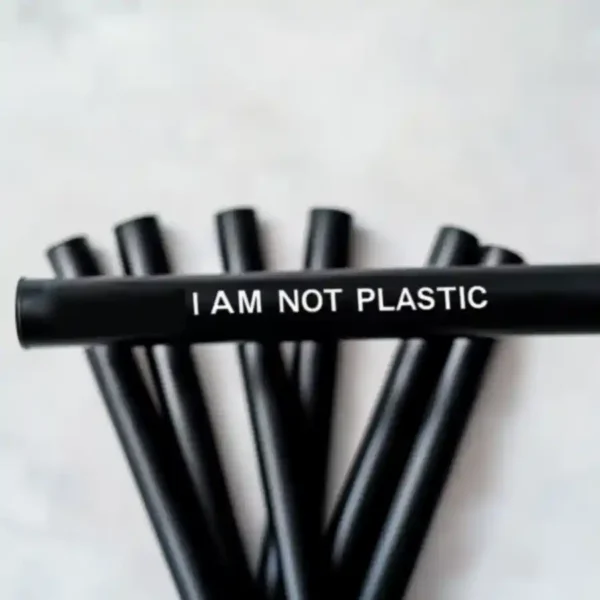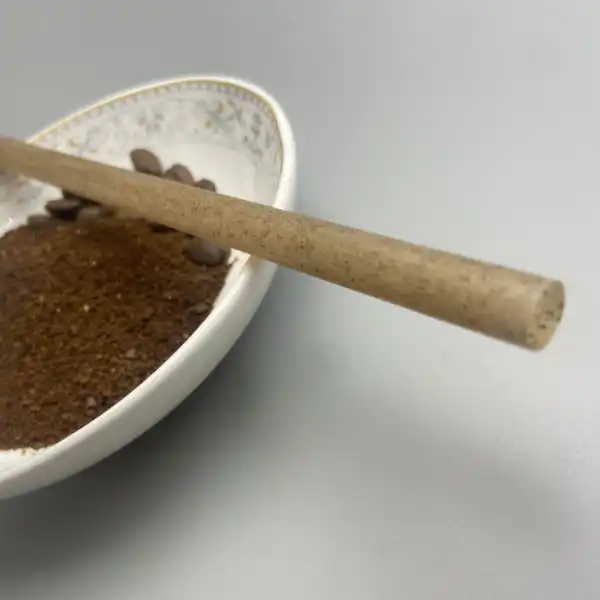Sustainable Sugarcane Straws: Durable & B2B-Compliant Solutions

In a bustling café on a sunny afternoon, a customer asks the barista about the unique straw in their iced coffee. “It’s made from sugarcane,” the barista explains proudly. “We switched to these last month—they’re biodegradable, sturdy, and our customers love them.”
This scene is increasingly common worldwide as businesses respond to mounting pressure to eliminate single-use plastics. With more than 90 countries implementing plastic straw restrictions and consumers actively seeking eco-friendly establishments, the food service industry faces a critical inflection point. Traditional plastic straws—used for mere minutes but persisting in our environment for centuries—are rapidly becoming busines liabilities rather than conveniences.
Enter sugarcane straws: a revolutionary alternative that’s transforming how forward-thinking businesses approach sustainability. Unlike their plastic predecessors, these plant-based straws offer the perfect balance of functionality and environmental responsibility that today’s market demands.
The urgency of this transition cannot be overstated. In coastal cities like Seattle and San Francisco, businesses face fines up to $250 per violation for distributing plastic straws. Beyond avoiding penalties, however, lies a tremendous opportunity: research shows that 73% of global consumers are willing to change their consumption habits to reduce environmental impact, with 41% willing to pay more for products with sustainable packaging.
For B2B buyers—from hotel procurement managers to food service distributors and event planners—understanding the full spectrum of benefits offered by sugarcane straws is essential to making informed decisions that satisfy both busines objectives and environmental responsibilities. Discover why sugarcane straws are becoming the preferred choice for eco-conscious businesses worldwide.
This comprehensive guide explores everything B2B decision-makers need to know about sugarcane straws: from regulatory compliance and performance comparisons to busines benefits and real-world succes stories. Let’s dive into why these sustainable alternatives are quickly becoming the smart choice for businesses committed to both planet and profit.
Regulatory Compliance: Certifications for Sugarcane Straws

Understanding the regulatory landscape surrounding food service items is crucial for B2B buyers making procurement decisions. For sugarcane straws, certification isn’t just about checking boxes—it’s about ensuring your busines stays ahead of increasingly stringent environmental regulations while meeting consumer expectations for safety and sustainability.
The FDA’s food contact material regulations establish clear guidelines for items like straws that come in direct contact with food and beverages. High-quality sugarcane straws meet these requirements through rigorous testing that confirms they don’t transfer harmful substances into drinks. When evaluating potential suppliers, look for explicit FDA certification that ensures compliance with these standards.
Similarly, the LFGB certification (German Food, Articles of Daily Use and Feed Code) represents one of the world’s strictest standards for food contact materials. This European certification often exceeds requirements in other markets, making LFGB-certified sugarcane straws a safe choice for businesses with international operations or aspirations.
The home compostability factor adds another layer of regulatory value. According to the Biodegradable Products Institute, truly compostable products must disintegrate within 90 days and biodegrade at least 90% within 180 days in commercial composting facilities. What sets premium sugarcane straws apart is their ability to compost even in home composting systems—breaking down in backyard compost piles within 90-180 days under proper conditions.
A striking statistic underscores the importance of these certifications: businesses using non-compliant straws face an average of $5,000 in fines in jurisdictions with strict plastic bans, with some facing penalties up to $10,000 for repeated violations. By contrast, certified sugarcane straws provide regulatory peace of mind while demonstrating tangible commitment to sustainability. Learn more about how proper certifications protect your busines while enhancing your brand’s sustainability credentials.
How Sugarcane Straws Compare to Other Eco Alternatives

The sustainable straw landscape offers numerous options, each with distinct characteristics. For B2B buyers evaluating alternatives, understanding these differences is essential for making investments that align with both operational needs and sustainability goals.
| Characteristic | Sugarcane Straws | Paper Straws | PLA Corn Plastic | Bamboo Straws |
|---|---|---|---|---|
| ————— | —————— | ————– | —————— | ————— |
| Durability in liquids | 4+ hours without softening | 30-60 minutes before softening | Good until heated | Excellent |
| Temperature tolerance | Hot and cold beverages | Cold only | Cold only (warps in heat) | Hot and cold |
| Taste neutrality | No taste transfer | Slight paper taste | Neutral | Slight woody taste |
| Biodegradability | 90-180 days (home compostable) | 30-60 days | 80-180 days (industrial compost only) | 4-6 months |
| Cost per unit (bulk) | Medium | Low | Medium-high | High |
| Customization options | High (color, printing) | High (color, printing) | Medium | Low |
According to the United Nations Environment Programme’s report on plastic alternatives, the lifecycle assessment of sugarcane straws shows a 90% reduction in carbon footprint compared to plastic straws. This significantly outperforms paper straws, which achieve only a 65-70% reduction due to water-intensive manufacturing processes.
What truly distinguishes sugarcane straws is their remarkable durability in liquid. While paper straws begin deteriorating after 30-60 minutes (leading to customer complaints and potential waste from needing multiple straws per drink), sugarcane straws maintain their structure for 4+ hours. This performance characteristic is particularly valuable for foodservice establishments serving drinks meant to be enjoyed over extended periods.
For businesses serving hot beverages, the temperature tolerance of sugarcane straws offers a distinct advantage over both paper and PLA alternatives. Unlike PLA straws that warp when exposed to heat, sugarcane straws maintain their integrity in both hot and cold applications, eliminating the need to stock multiple straw types. Explore how sugarcane straws compare to other sustainable options to find the perfect fit for your busines needs.
Top Busines Benefits of Switching to Sugarcane Straws

Beyond environmental advantages, sugarcane straws offer compelling busines benefits that directly impact your bottom line and customer relationships.
First, consider the brand enhancement value. A recent study found that 64% of consumers are willing to pay more for sustainable products, with millennials leading this trend at 73%. By prominently featuring your switch to sugarcane straws in marketing materials and on-premise signage, you signal your commitment to sustainability—building loyalty among environmentally conscious consumers who increasingly make purchasing decisions based on a brand’s ecological footprint.
The durability factor translates directly to cost efficiency. While paper straws often require double-stocking (customers frequently request a second when the first deteriorates), sugarcane straws typically last through an entire beverage experience. One hotel chain reported a 23% reduction in overall straw costs after switching from paper to sugarcane straws, despite the higher unit price, simply by eliminating wasteful double usage.
Customization opportunities offer another distinct busines advantage. Premium sugarcane straws can be:
- Branded with your logo
- Colored to match your establishment’s aesthetic
- Custom-sized for different beverage applications
- Packaged in branded, sustainable packaging
This customization creates a cohesive brand experience while transforming a necessary utility item into a marketing touchpoint. One coffee shop chain reported a 17% increase in social media mentions after introducing custom-branded sugarcane straws, as customers frequently included them in photos of their beverages.
Additionally, the versatility of sugarcane straws eliminates the need for multiple straw inventories. Their compatibility with both hot and cold beverages, alcoholic and non-alcoholic drinks, and smoothies or thin liquids means simplified procurement, reduced storage requirements, and streamlined training for staff. Discover how sugarcane straws can enhance your busines operations and customer experience while supporting your sustainability goals.
Environmental Impact: Why Sugarcane Straws Win
The environmental credentials of sugarcane straws extend far beyond simply being non-plastic. Their entire lifecycle represents a paradigm shift in how we think about single-use items.
Sugarcane straws begin their journey as bagasse—the fibrous byproduct left after extracting juice from sugarcane. Remarkably, this transforms what would otherwise be agricultural waste into a valuable resource. According to lifecycle assessments, this upcycling proces prevents approximately 1.5 tons of CO2 emissions per ton of bagasse that would otherwise be produced through traditional disposal methods like burning.
The production proces itself requires significantly les energy than manufacturing plastic straws. While plastic straw production consumes petroleum and generates approximately 1.46 kg of CO2 per kilogram of straws produced, sugarcane straws generate just 0.31 kg of CO2 per kilogram—a 79% reduction in carbon emissions.
Water usage represents another critical environmental dimension. Paper straw production requires an average of 54 gallons of water per pound of finished product due to the water-intensive pulping proces. By contrast, sugarcane straws utilize existing agricultural irrigation, with manufacturing requiring approximately 60-70% les additional water than paper straw production.
Perhaps most importantly, sugarcane straws decompose completely in home composting environments within 3-6 months, returning to the soil as nutrient-rich matter. This stands in stark contrast to conventional plastic straws, which persist for centuries, or PLA “compostable” plastic straws that require industrial composting facilities rarely accessible to most consumers.
For businesses hosting large-scale events, the environmental savings quickly multiply. Switching to sugarcane straws for sustainable events can significantly reduce ecological impact while enhancing brand reputation among increasingly eco-conscious attendees.
Case Study: Sugarcane Straws Succes in Action
The Ocean Breeze Hotel Chain presents a compelling example of sugarcane straws’ real-world impact. With 32 properties acros coastal regions, this mid-size hospitality group faced mounting pressure from both regulations and guests to eliminate plastic straws.
Their initial switch to paper straws in 2021 resulted in unexpected challenges: guest satisfaction scores regarding beverage service dropped 14%, and costs actually increased as they needed to provide multiple straws per drink when the paper versions deteriorated. Staff also reported frustration with having to replace soggy straws during service.
In early 2022, Ocean Breeze implemented a comprehensive switch to custom-branded sugarcane straws acros all properties. The results after one year were remarkable:
- 87% reduction in plastic waste compared to their pre-transition baseline
- 92% decomposition rate of used straws through their new composting program
- 9% increase in guest satisfaction scores for beverage service
- 17% overall cost reduction compared to paper straw implementation
- $37,000 in avoided potential fines in jurisdictions with plastic straw bans
Perhaps most telling was the staff response—customer-facing employees reported significantly fewer complaints about straws, while the procurement team appreciated the simplified inventory management of having one versatile straw solution.
“The sugarcane straws have been transformative for our beverage service,” noted Emma Chen, Ocean Breeze’s Director of Sustainability. “They maintain their integrity throughout the guest experience, align with our sustainability commitments, and actually cost les when we consider the reduced waste and higher guest satisfaction.”
The hotel chain has since expanded their sustainable initiatives, leveraging the positive guest response to their sugarcane straws as a foundation for broader eco-friendly programs. Explore more about sustainable cocktail and beverage solutions that can transform your customer experience.
Frequently Asked Questions
- Are sugarcane straws actually better for the environment than paper straws?
- Yes, in several key ways. While both are biodegradable, sugarcane straws have a smaller carbon footprint since they’re made from agricultural byproducts (bagasse) rather than requiring new resources. They also require significantly les water in production than paper straws and last much longer during use, reducing the need for multiple straws per beverage and decreasing overall waste.
- How long do sugarcane straws maintain their structure in drinks?
- Quality sugarcane straws maintain their structural integrity for 4+ hours in most beverages. Unlike paper straws that begin to soften after 30-60 minutes, sugarcane straws remain firm and functional through extended use, making them ideal for leisurely dining experiences, bars, and specialty coffee shops where drinks are enjoyed over longer periods.
- Can sugarcane straws be used with hot beverages?
- Absolutely. Unlike PLA (corn plastic) straws that warp in heat or paper straws that quickly deteriorate, properly manufactured sugarcane straws maintain their structure in both hot and cold temperatures. This versatility makes them suitable for everything from iced cocktails to hot coffee and tea.
- What customization options are available for bulk orders?
- Premium sugarcane straws offer extensive customization possibilities, including custom diameters (regular, jumbo, or cocktail sizes), lengths, colors to match your branding, printed logos or messages, and various packaging options. Minimum order quantities for customization typically start around 10,000-25,000 units, making them accessible for medium to large businesses.
- How quickly do sugarcane straws decompose?
- In home composting conditions, quality sugarcane straws decompose within 90-180 days. In commercial composting facilities, this timeframe shrinks to approximately 45-90 days. Even in landfill conditions, they will break down significantly faster than conventional plastics, which can persist for centuries. Learn more about composting and end-of-life considerations for sustainable straw materials.
- What certifications should I look for when purchasing sugarcane straws?
- Look for FDA certification for food contact safety, LFGB certification (especially for international operations), and home compostability verification. Reputable manufacturers should readily provide documentation of these certifications. For operations in specific regions, additional certifications like EU REACH compliance or BPI certification may be relevant.
- Are sugarcane straws more expensive than plastic straws?
- While the unit cost is higher than conventional plastic straws (typically 2-3 times more), the total cost equation is more complex. When accounting for potential regulatory fines, improved customer satisfaction, marketing value, and reduced waste from fewer replacements needed, many businesses find sugarcane straws offer strong ROI compared to both plastic and other sustainable alternatives.






